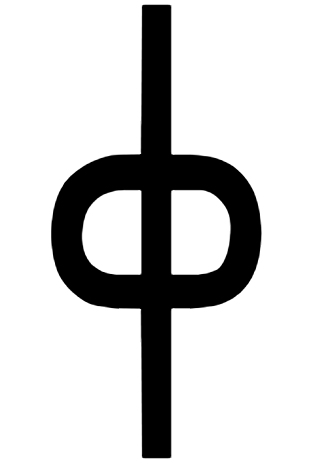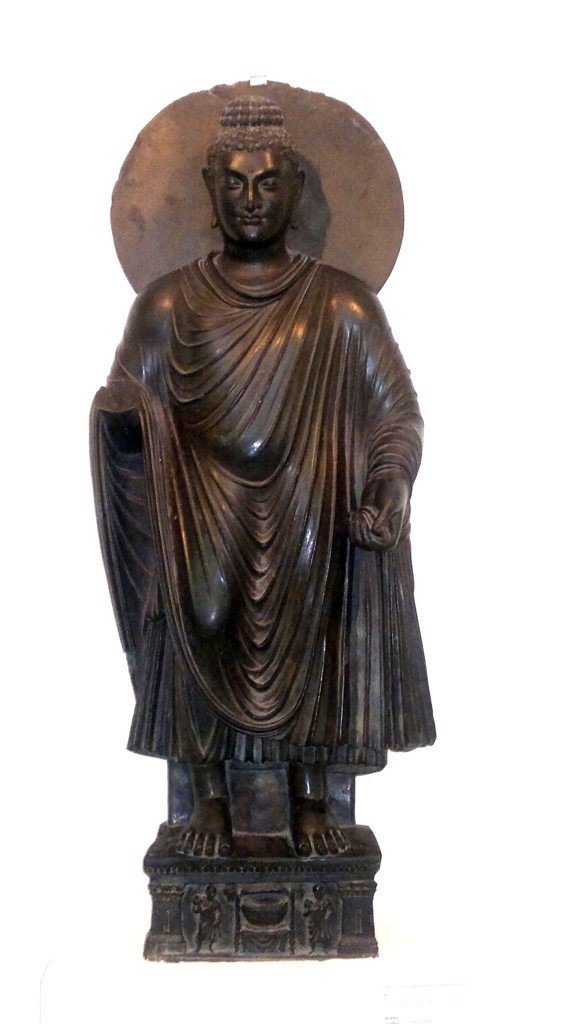|
Vāsishka
Vāsishka (Bactrian: BAZHÞKO ''Bazēško''; Middle Brahmi ', '; Kharosthi: 𐨬𐨗𐨿𐨱𐨅𐨮𐨿𐨐 ', '; ruled c. 247–265 CE) was a Kushan emperor, who seems to have had a short reign following Kanishka II. Rule The rule of Vāsishka in the area of Punjab is attested by inscriptions, as well as in the area of Mathura (Isapur inscription). His rule is recorded as far south as Sanchi, where one and possibly another inscription in his name have been found, dated to the year 22 (The Sanchi inscription of "Vaskushana"-i.e. Vasishka Kushana) and year 28 (The Sanchi inscription of Vasaska-i.e. Vasishka) of a Kushan era (widely thought to be the second century of the Kanishka era). This would place his reign c. 247–265. Inscriptions and statuary Vasishka appears in four known inscriptions, including a Kharoshti inscription in the Indus region. Sanchi Bodhisattava Several statues or statue fragments from the art of Mathura with the name of Vasishka have been found on t ... [...More Info...] [...Related Items...] OR: [Wikipedia] [Google] [Baidu] |
Kushan
The Kushan Empire ( grc, Βασιλεία Κοσσανῶν; xbc, Κυϸανο, ; sa, कुषाण वंश; Brahmi: , '; BHS: ; xpr, 𐭊𐭅𐭔𐭍 𐭇𐭔𐭕𐭓, ; zh, 貴霜 ) was a syncretic empire, formed by the Yuezhi, in the Bactrian territories in the early 1st century. It spread to encompass much of modern-day territory of, Afghanistan, Pakistan, Uzbekistan, and northern India, at least as far as Saketa and Sarnath near Varanasi (Benares), where inscriptions have been found dating to the era of the Kushan Emperor Kanishka the Great. The Kushans were most probably one of five branches of the Yuezhi confederation, an Indo-European nomadic people of possible Tocharian origin, who migrated from northwestern China (Xinjiang and Gansu) and settled in ancient Bactria. The founder of the dynasty, Kujula Kadphises, followed Greek religious ideas and iconography after the Greco-Bactrian tradition, and being a follower of Shaivism. The Kushans in general were a ... [...More Info...] [...Related Items...] OR: [Wikipedia] [Google] [Baidu] |
Kanishka III
Kanishka III (Greco-Bactrian: ΚΑΝΗϷΚΕ ''Kanēške''; Kharosthi: 𐨐𐨞𐨁𐨮𐨿𐨐 ', '; Brahmi: ', '; sa, कनिष्क), was a Kushan emperor who reigned from around the year 265 CE to 270 CE. He is believed to have succeeded Vasishka and was succeeded by Vasudeva II. He ruled in areas of Northwestern India. Inscriptions In an inscription dated to the "Year 41" (probably of the 2nd century of the Kanishka era) and discovered on the borders of the river Ara in Punjab, he qualifies himself as a ''Maharaja rajadhiraja Devaputra Kaisara Kanishka'' ("Great King, King of Kings, Son of God, Caesar, Kanishka), suggesting some awareness of the Roman Empire as ''Kaisara'' seems to stand for "Caesar", and names himself as the son of Vajheshka, identified as Kushan ruler Vashishka. The inscription is rather worn and the reading ''Kaisara'' has been doubted, especially since no other mentions of this title are known from Kushan sources. Coinage It was initially though ... [...More Info...] [...Related Items...] OR: [Wikipedia] [Google] [Baidu] |
Sten Konow
Sten Konow. Sten Konow (17 April 1867 – 29 June 1948) was a Norwegian Indologist. He was professor of Indic philology at the Christiania University, Oslo, from 1910, moving to Hamburg University in 1914, where he was professor for Indian history and culture. He returned to Oslo as professor for Indian languages and history in 1919. He was a specialist on the Tibeto-Burmese languages. Konow was born in Sør-Aurdal in Oppland where his father Wollert Otto Konow (1833–95) was a parish priest married to Henrikka Christiane Johanne Molde Wolff (1841–1927). Konow studied art, graduating from Lillehammer in 1884. He then studied in Kristiania before movingt to Halle and worked in the Oslo University library for some time. In 1890 he collated a Norwegian lexicon. He returned to studies in Indian philology at the University of Halle under Richard Pischel and received a doctorate in 1893 with studies on the Sāmavidhānabrāhmana. He worked in Berlin from 1894 to 1896 and returne ... [...More Info...] [...Related Items...] OR: [Wikipedia] [Google] [Baidu] |
Gupta Ashoka H
Gupta () is a common surname or last name of Indian origin. It is based on the Sanskrit word गोप्तृ ''goptṛ'', which means 'guardian' or 'protector'. According to historian R. C. Majumdar, the surname ''Gupta'' was adopted by several different communities in northern and eastern India at different times. In Bengal The Rāmpāl plate of Srichandra mentions a line of Brahmins who had Gupta as their surname. In Bengal region, the surname is found among Baidyas (mainly) as well as Kayasthas. In Northern India The Gupta surname is also used by Banias and Jains in the northern part of India. Notables Monarchs *Gupta (king), founder of the Gupta dynasty *Ghatotkacha (king) *Chandragupta I *Samudragupta *Chandragupta II, also known as Chandragupta Vikramaditya *Kumaragupta I *Skandagupta, last Gupta emperor *Vishnugupta (Gupta Empire) *Budhagupta Academic *Akhil Gupta (born 1959), professor at the University of California, Los Angeles, in the field of social ... [...More Info...] [...Related Items...] OR: [Wikipedia] [Google] [Baidu] |
Gupta Ashoka M
Gupta () is a common surname or last name of Indian origin. It is based on the Sanskrit word गोप्तृ ''goptṛ'', which means 'guardian' or 'protector'. According to historian R. C. Majumdar, the surname ''Gupta'' was adopted by several different communities in northern and eastern India at different times. In Bengal The Rāmpāl plate of Srichandra mentions a line of Brahmins who had Gupta as their surname. In Bengal region, the surname is found among Baidyas (mainly) as well as Kayasthas. In Northern India The Gupta surname is also used by Banias and Jains in the northern part of India. Notables Monarchs *Gupta (king), founder of the Gupta dynasty *Ghatotkacha (king) *Chandragupta I *Samudragupta * Chandragupta II, also known as Chandragupta Vikramaditya *Kumaragupta I *Skandagupta, last Gupta emperor *Vishnugupta (Gupta Empire) *Budhagupta Academic *Akhil Gupta (born 1959), professor at the University of California, Los Angeles, in the field of soci ... [...More Info...] [...Related Items...] OR: [Wikipedia] [Google] [Baidu] |
Mathura Museum
__NOTOC__ Government Museum, Mathura, commonly referred to as Mathura museum, is an archaeological museum in Mathura city of Uttar Pradesh state in India. The museum was founded by then collector of the Mathura district, Sir F. S. Growse in 1874. Initially, it was known as Curzon Museum of Archaeology, then Archaeology Museum, Mathura, and finally changed to the Government Museum, Mathura. Overview The museum houses artifacts pottery, sculptures, paintings, and coins primarily from in and around Mathura, plus discoveries made by noted colonial archaeologists like Alexander Cunningham, F. S. Growse, and Fuhrer. The museum is famous for ancient sculptures of the Mathura school dating from 3rd century BC to 12th century AD., during Kushan Empire and Gupta Empire. today it is one of the leading museums of Uttar Pradesh. The Government of India issued a postage stamp on 9 October 1974 on the centenary of the museum. Notable collections File:Archaic Mother Goddess - Terracott ... [...More Info...] [...Related Items...] OR: [Wikipedia] [Google] [Baidu] |
Kharoshthi
The Kharoṣṭhī script, also spelled Kharoshthi (Kharosthi: ), was an ancient Indo-Iranian script used by various Aryan peoples in north-western regions of the Indian subcontinent, more precisely around present-day northern Pakistan and eastern Afghanistan. It was used in Central Asia as well. An abugida, it was introduced at least by the middle of the 3rd century BCE, possibly during the 4th century BCE, and remained in use until it died out in its homeland around the 3rd century CE. It was also in use in Bactria, the Kushan Empire, Sogdia, and along the Silk Road. There is some evidence it may have survived until the 7th century in Khotan and Niya, both cities in East Turkestan. Form Kharosthi (, from right to left ''Kha-ro-ṣṭhī'') is mostly written right to left (type A). Each syllable includes the short /a/ sound by default, with other vowels being indicated by diacritic marks. Recent epigraphic evidence has shown that the order of letters in the Kharosthi ... [...More Info...] [...Related Items...] OR: [Wikipedia] [Google] [Baidu] |
Indus
The Indus ( ) is a transboundary river of Asia and a trans-Himalayan river of South and Central Asia. The river rises in mountain springs northeast of Mount Kailash in Western Tibet, flows northwest through the disputed region of Kashmir, Quote: "Kashmir, region of the northwestern Indian subcontinent. It is bounded by the Uygur Autonomous Region of Xinjiang to the northeast and the Tibet Autonomous Region to the east (both parts of China), by the Indian states of Himachal Pradesh and Punjab to the south, by Pakistan to the west, and by Afghanistan to the northwest. The northern and western portions are administered by Pakistan and comprise three areas: Azad Kashmir, Gilgit, and Baltistan, ... The southern and southeastern portions constitute the Indian state of Jammu and Kashmir. The Indian- and Pakistani-administered portions are divided by a "line of control" agreed to in 1972, although neither country recognizes it as an international boundary. In addition, China became ... [...More Info...] [...Related Items...] OR: [Wikipedia] [Google] [Baidu] |
Sanchi Buddha Piedestal Inscribed Year 22 Of Vaskushana
Sanchi is a Buddhist complex, famous for its Great Stupa, on a hilltop at Sanchi Town in Raisen District of the State of Madhya Pradesh, India. It is located, about 23 kilometres from Raisen town, district headquarter and north-east of Bhopal, capital of Madhya Pradesh. The Great Stupa at Sanchi is one of the oldest stone structures in India, and an important monument of Indian Architecture. It was originally commissioned by the Mauryan emperor Ashoka the Great in the 3rd century BCE. Its nucleus was a simple hemispherical brick structure built over the relics of the Buddha. It was crowned by the '''chhatra, a parasol-like structure symbolising high rank, which was intended to honour and shelter the relics. The original construction work of this stupa was overseen by Ashoka, whose wife Devi was the daughter of a merchant of nearby Vidisha. Sanchi was also her birthplace as well as the venue of her and Ashoka's wedding. In the 1st century BCE, four elaborately carved toranas ... [...More Info...] [...Related Items...] OR: [Wikipedia] [Google] [Baidu] |
Standing Buddha
The Standing Buddha of the Tokyo National Museum is an example of Greco-Buddhist statuary. Comparable ones can be found in the Guimet Museum in France, and in the National Museum, New Delhi besides various other museums of South Asia. The statue was excavated at Gandhara, Pakistan, and dates to the 1st or 2nd century AD. Context Some of the standing Buddhas (such as the example pictured) were sculpted using the specific Greek technique of making the hands and sometimes the feet in marble to increase the realistic effect, and the rest of the body in another material.It is also defined as the “Great Standing Buddha” Alfred Charles Auguste Foucher especially considered Hellenistic free-standing Buddhas as "the most beautiful, and probably the most ancient of the Buddhas", assigning them to the 1st century BC, and making them the starting point of the anthropomorphic representations of the Buddha. Development From another direction, Chinese historical sources and mural pa ... [...More Info...] [...Related Items...] OR: [Wikipedia] [Google] [Baidu] |







